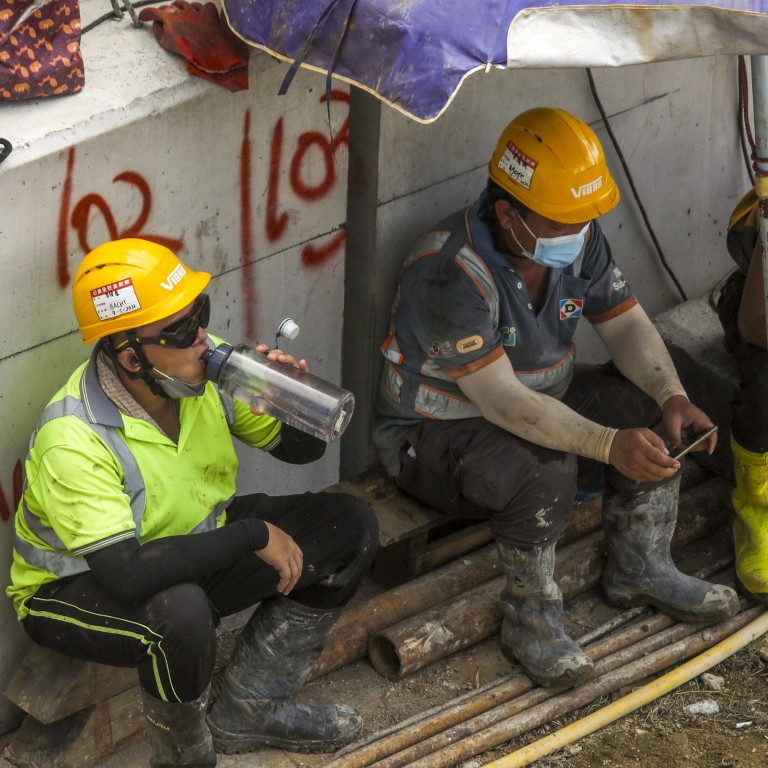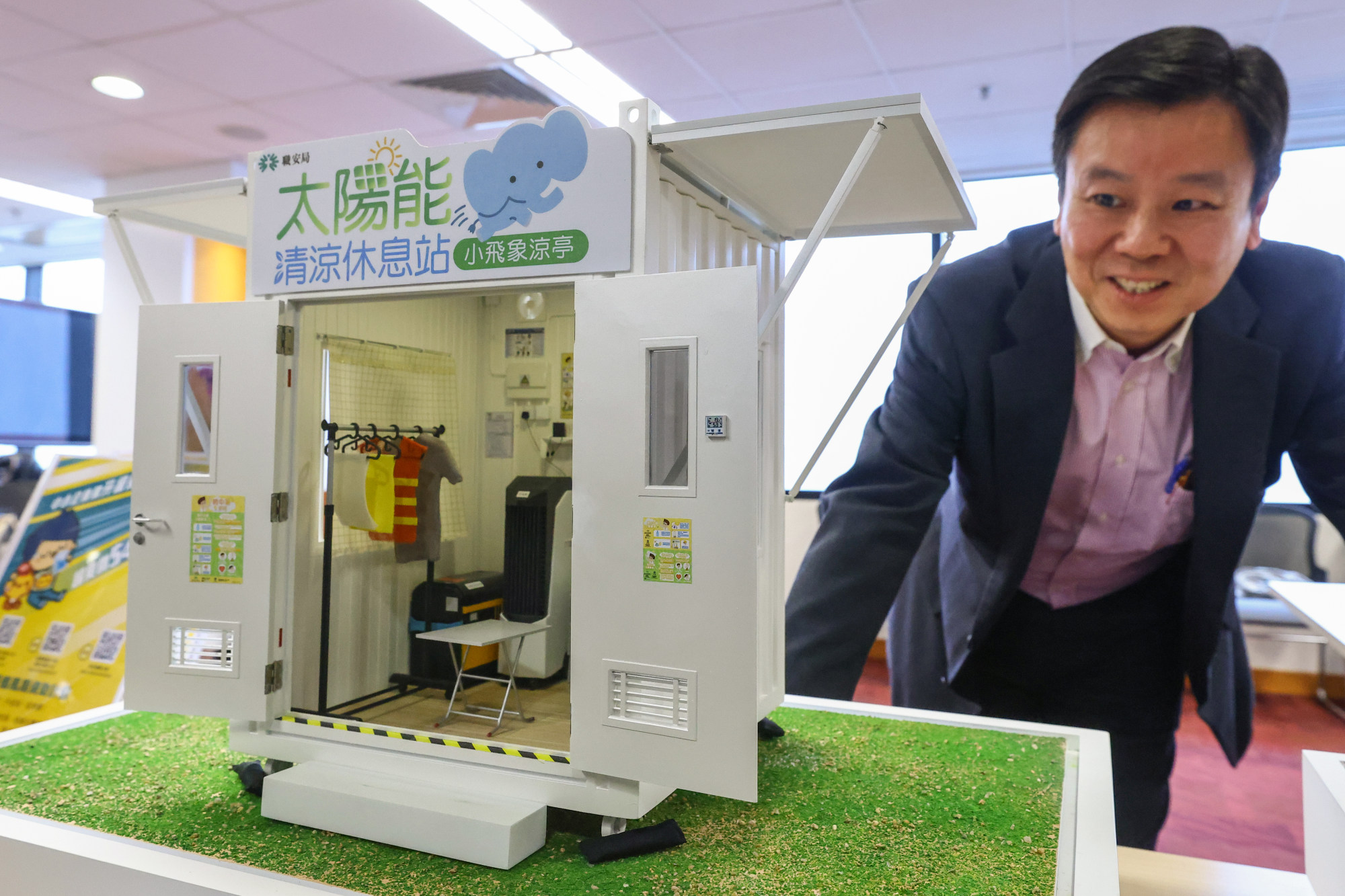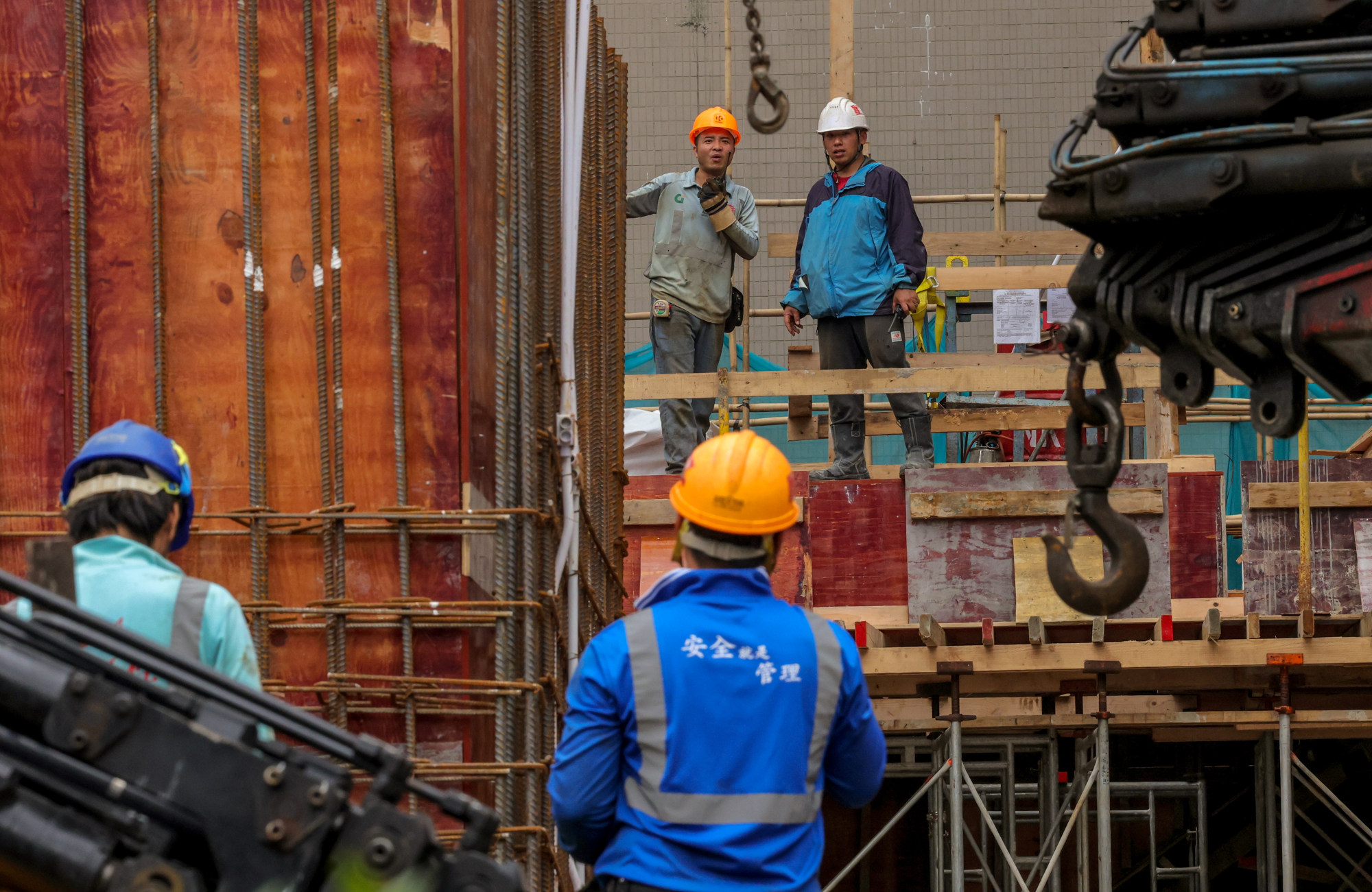
Hong Kong bosses in hot seat? New 3-tier guide to protect outdoor workers from heatstroke, with rest advised when index hits certain mark
- Unionists question whether system will truly protect workers since it will not be mandatory for bosses to follow and therefore difficult to enforce
- Guidelines centre on heat index calculated using the relative humidity, intensity of sunlight and temperature recorded
Outdoor workers in Hong Kong such as builders and scaffolders will be advised to cease operations when temperatures soar under a new three-tier warning system that starts next Monday and aims to protect employees from heatstroke.
But unionists questioned whether the system would truly protect workers since it was not mandatory for employers to follow and therefore difficult to enforce, while industry representatives expressed concerns about breaks slowing down construction work.
Revealing the coming guidelines a week before their implementation, Deputy Commissioner for Labour Vincent Fung Hao-yin on Monday said the policy would serve as a recommendation instead of being mandatory.
“Work environments vary in the city. We think it is important to first come up with these general guidelines as clear references for both employers and employees. We recommend they reach a consensus by referring to the guidelines,” Fung said.

He did not indicate if the guidelines could become legally binding in the future.
The Guidance Notes on Prevention of Heat Stress At Work, which will take effect on May 15 and be reviewed in two years, will apply to outdoor professions, indoor operations without air conditioning and those near heat sources or heat-generating equipment.
The guidelines centre on a three-tier warning system based on the Hong Kong Heat Index, with each level recommending work adjustments for staff.
The index is calculated using the relative humidity, intensity of sunlight and temperature recorded at the Tsim Sha Tsui station of the Hong Kong Observatory, with the first factor carrying the biggest weight in the equation.
A shield from heatstroke? Hong Kong to include heat index in employers’ guide
Former Observatory assistant director Leung Wing-mo said the equation meant one could not assume a high temperature meant a high index point.
An amber warning, indicating high heat stress, will apply when the index hits 30, to be upgraded to red and black when it reaches 32 and 34 respectively, referring to very high or extremely high heat stress.
The heat index on Monday was between 20.6 and 21.4, with citywide temperatures ranging from 18.3 to 23.8 degrees Celsius.
Once issued, warnings will remain in force for an hour before being cancelled or upgraded.
Under the guidelines, those involved in “very heavy” labour, such as scaffolders and bar-benders, are advised not to work when red or black warnings come into effect. For an amber alert, they are recommended to take a 45-minute break for every 15 minutes of work.
Those considered as being involved in “heavy labour”, such as porters and concreters, are advised to rest when the black warning is up. They should take a 30-minute break for an equal period of work under the amber warning, and a 45-minute break for 15 minutes’ work with the red alert in place.
Hongkongers in subdivided flats, rooftop huts bear brunt of heatwave
Employees such as chefs, delivery workers, cleaners and gardeners involved in “moderate” labour are recommended to take a 15-minute break for 45 minutes of work under the amber code, and for their rest time to eventually be increased to 45 minutes per hour under the black alert.
No breaks are recommended for workers such as security guards and traffic controllers under the amber warning. But it is suggested they rest for 15 minutes for every 45 minutes of work when the red warning is raised, and take a 30-minute break after half an hour of work on days with a black warning.
Details on the three tiers are available on the government and Observatory websites, as well as the weather forecaster’s mobile app.
Fung said that from 2014 until now, Hong Kong had never experienced days corresponding to a black warning, while the red alert covered fewer than 10 days.
The amber warning, however, could have been issued for 52 days on average annually over the past eight years.

Wu Mei-yin of the Cleaning Workers Union said the intention was good but the details were not practical and the impact of the guidelines would be limited because they were voluntary.
“Most cleaners will not check their mobile phones frequently when at work. So how can they learn or be informed when the warning is out? Even if they learn about the warning, where can they take a break?” Wu said, adding most refuse collection points in the city were not equipped with separate rooms for rest.
“If employers decide not to follow the guidelines, there is no way for cleaners to fight for their rights.”
Ng Wai-leung, rights and complaints officer from the Hong Kong Construction Industry Employees General Union, said the guidelines would provide workers with grounds to discuss with employers work terms under hot weather.
“It is true that it is up to the employers to decide whether to follow the guidelines or not. But employees at least are granted bargaining powers. Most construction workers welcome the guidelines,” Ng said.
Will this year be one of Hong Kong’s hottest ever? ‘High chance,’ Observatory says
Wong Siu-ming, who chairs the Hong Kong Bar-bending Contractors Association, said it would be hard to implement the guidelines on construction sites as the recommended breaks would slow down work progress.
Under the amber warning, bar-benders should take a 45-minute break after working for 15 minutes.
“The construction deadline is set. If everyone is taking a break, or even operations cease, who will pay the price for delays? There is already a shortage of construction workers. Now with the advised breaks, how can we meet the deadline?” Wong said.
He suggested that it was reasonable to allow bar-benders to take turns for breaks, usually for not longer than 15 minutes.
According to the Construction Industry Council, Hong Kong could be short of up to 40,000 workers and 6,500 professionals in the sector by 2027.
Hong Kong swelters as mercury hits 35.6 degrees, second hottest July day on record
The guidelines were introduced following calls by unionists last summer, when Hong Kong experienced 22 hot nights in July, the most since records began in 1884.
Under the law, heatstroke is categorised as a work injury, with employers held accountable.
Across the border, authorities in mainland China updated the “Management Measures for Heatstroke Prevention and Cooling” – a set of countrywide rules targeting workers’ rights under high temperatures – in 2012.
The rules stipulate that all outdoor work must be halted if the temperature reaches 40 degrees at any point. Labourers must not work more than six hours in total throughout the day if the maximum temperature falls anywhere from 37 to 40 degrees.
Additional reporting by Wynna Wong

